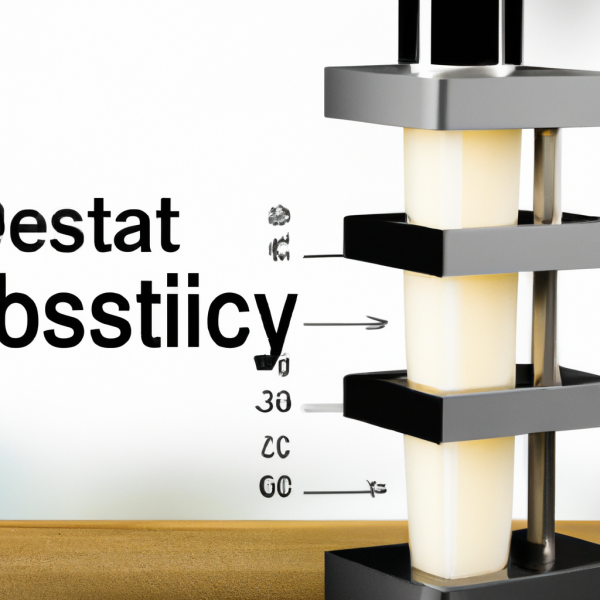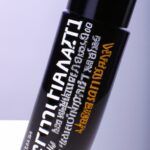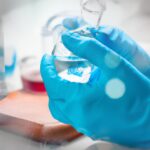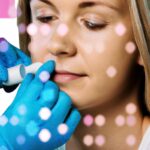Discover the Benefits of Stability Testing for Your Cosmetics Business
Cosmetics production is an ever-evolving industry which requires manufacturers to keep up with the latest technologies and processes in order to meet the increasing demands for quality products and services. At the same time, manufacturers must ensure that their products are safe for customers to use. One of the essential strategies to guarantee both safety and quality is stability testing.
Stability testing helps cosmetics companies to determine how stable a certain product will be over a period of time. By regularly monitoring this stability, manufacturers are able to make informed decisions about the potential shelf life of certain items, as well as whether or not a product is suitable for use. This is critical for maintaining quality, preserving a company’s reputation, and safeguarding the health of their customers.
In this article, we are going to look at why stability testing is so important for the cosmetics industry. We will outline what stability testing covers and how it can benefit your business. Finally, we will reveal the steps to success when it comes to stability testing.
What is Stability Testing?
Stability testing is a powerful scientific process used to evaluate existing or new products to determine the potency, potency variability, and shelf-life of a cosmetic product. By assessing the product’s quality and safety over time, stability testing helps businesses effectively control their product’s shelf-life and minimize product recalls. This helps to ensure that the product remains safe, effective, and meets the customer’s expectations.
In the cosmetics industry, stability testing covers a wide range of factors, including but not limited to shelf-life, packaging, container/closures, transportation, storage stability, and microbial contamination. Depending on the product, manufacturers may also want to consider additional tests, such as accelerated testing, thermal and photostability testing, and probabilistic shelf-life modeling.
Importance of Stability Testing for Cosmetics Companies
For the cosmetics industry, stability testing is essential for the safety and quality of the products. By regularly monitoring and evaluating the products, manufacturers are able to determine their shelf life and detect any potential faults while they are still in the development process. This helps to identify any areas of concern before the product reaches the consumer, which helps to prevent costly recalls and ensures that the product remains of the highest quality.
Stability testing also provides valuable insights into the customer’s experience when using the product. By determining the shelf-life, the product can be stored properly, avoiding any potential issues with the formulation or packaging while still following the guidelines set out by the governing bodies. Additionally, manufacturers can use the results from stability testing to improve their marketing strategies, as they will now have a deeper understanding of the shelf-life and whether it is suitable for mass production.
The importance of stability testing for cosmetics companies could also be seen in terms of customer feedback. One of the biggest challenges that companies face is understanding the customer’s experience with the product. This can be difficult to measure as customers do not always express their opinions. However, stability testing helps to provide valuable data which can allow companies to make informed decisions about the customer’s experience and how the product could be improved in the future.
Finally, stability testing can help to protect the consumer by ensuring that the product adheres to all the safety and quality standards set by the governing bodies. This allows manufacturers to determine whether the product is suitable for its intended purpose, which can ultimately help to reduce any potential risks that may come with using the product.
Steps to Ensure Success with Stability testing
The key to success with stability testing is to have a clear understanding of the product and the process. Here are some steps to guide you through the process:
Step 1: Define Your Requirements
The first step is to define the objectives for the stability testing. Ask yourself, why do you need to perform stability testing and what are your desired outcomes? This will help you to create measurable goals that can be used to track the progress of the tests and identify any potential areas of improvement.
Step 2: Develop a Testing Protocol
Once the objectives have been established, the next step is to develop a testing protocol. This should include details about the type of tests that will be performed, the parameters of the tests, and the timeline for the completion of the testing.
Step 3: Execute the Testing
In this step, the protocols developed in step two will be implemented. This will involve collecting samples, running the tests, and recording any observations.
Step 4: Analyze the Results
Once the tests are completed, the final step is to analyze the results. This will provide valuable insights as to how the product is performing and whether there is need for any changes.
Frequently Asked Questions (FAQs)
What are the benefits of stability testing?
The benefits of stability testing include ensuring the safety and quality of the product, preserving the company’s reputation, and safeguarding the health of their customers. Additionally, stability testing can help cosmetics companies determine their shelf life, improve their marketing strategies, and understand the customer’s experience with the product.
Why is it important to have a clear understanding of the product and testing process?
It is important to have a clear understanding of the product and testing process in order to ensure that the tests are conducted in the right way and give accurate results. This helps to reduce any potential risks associated with the product and ensure the quality and safety of the final product.
What are the steps involved in stability testing?
The steps involved in stability testing include defining the requirements, developing a testing protocol, executing the tests, and analyzing the results.
Conclusion
Stability testing is an essential process for the cosmetics industry and helps manufacturers to maintain the quality, safety, and effectiveness of their products. By regularly monitoring and testing their products, companies are also able to improve their marketing strategies and understand their customer’s experience.
While there are a number of steps involved in the stability testing process, it is important to have a clear understanding of the product and the testing procedures in order to ensure the best possible results. Following the steps outlined in this article will help to ensure success with the stability testing process and help to protect your company and customers.
Maximizing the Benefits of Stability Testing for Your Cosmetics Business
Stability testing is undoubtedly a crucial aspect of the cosmetics industry, enabling manufacturers to ensure the safety, quality, and effectiveness of their products. However, to fully leverage the advantages of stability testing, it is essential to delve deeper into its intricacies and implement best practices that guarantee optimal results. In this section, we will explore additional factors to consider and valuable tips to enhance your stability testing process.
Considerations for Comprehensive Stability Testing
To create a robust stability testing framework, it is important to take into account various factors that can impact the quality and longevity of your cosmetic products. In addition to the previously mentioned aspects such as shelf-life, packaging, container/closures, transportation, storage stability, and microbial contamination, consider incorporating the following elements into your stability testing protocols:
1. **Accelerated Testing**: Conducting accelerated stability testing can help simulate product aging under exaggerated conditions, allowing you to predict the product’s behavior and make informed decisions about its shelf-life.
2. **Thermal and Photostability Testing**: Thermal testing evaluates the product’s stability under temperature variations, while photostability testing examines its resistance to light exposure. Including these tests can provide insights into how your product performs under real-world conditions.
3. **Probabilistic Shelf-life Modeling**: By employing statistical methods and mathematical models, you can estimate the shelf-life of your cosmetic products with greater accuracy. This approach enables you to proactively plan for product stability and minimize potential risks.
Optimizing Stability Testing Procedures
Implementing effective stability testing practices requires meticulous planning, execution, and analysis. Here are some key steps to ensure success in your stability testing endeavors:
Step 1: Define Your Requirements
To achieve meaningful results, establish clear objectives and define what you aim to achieve through stability testing. Identifying specific goals will enable you to track progress, identify areas for improvement, and align your stability testing efforts with your business objectives.
Step 2: Develop a Comprehensive Testing Protocol
Create a testing protocol that outlines the specific tests to be conducted, their parameters, and the timeline for completion. This protocol should serve as a guide for consistent and standardized testing procedures, ensuring reproducibility and reliability of results.
Step 3: Execute Tests with Precision
During this phase, diligently follow the testing protocol, collect samples meticulously, perform tests accurately, and document all relevant observations. Maintaining attention to detail at every stage of the testing process is crucial for obtaining reliable and meaningful results.
Step 4: Analyze and Interpret Results
After completing the stability tests, conduct a thorough analysis of the data collected. Interpret the results to gain insights into product performance and identify any areas that require improvement or adjustments. Robust data analysis allows you to make informed decisions regarding the product’s stability and potential modifications.
Conclusion
By embracing stability testing as a cornerstone of your cosmetics business, you can uphold the safety, quality, and effectiveness of your products while safeguarding the health and satisfaction of your customers. Remember to consider additional factors such as accelerated testing, thermal and photostability testing, and probabilistic shelf-life modeling to create a comprehensive stability testing framework. Moreover, adhering to a well-defined protocol and implementing meticulous execution and analysis will help you extract maximum value from your stability testing efforts.
In the dynamic and competitive cosmetics industry, stability testing plays an indispensable role in meeting regulatory requirements, enhancing product quality, and maintaining a sterling brand reputation. Embrace the power of stability testing and make it an integral part of your business strategy to ensure ongoing success and growth.






